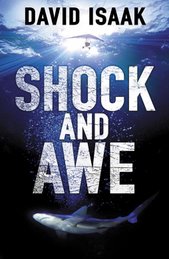Since every fourth person you meet here is an aspiring screenwriter (two of the others are aspiring actors), the idea of the three-act structure pervades daily life. Sit in any Starbuck’s and you’ll see a dozen people who can’t visit the toilet without parsing it: The locking of the door propels us from Act I into Act II. First Complication—the seat is dirty. First response…
Well, I suppose it’s better than the other screenwriting paradigm, Joseph Campbell’s Hero’s Journey. I don’t even want to contemplate how the Call to Adventure and the Refusal of the Call fit into visiting the toilet.
I’d always assumed the film community, and in particular that master of saying little at great length, Syd Field, were to blame for the three-act paradigm. (By the way, if you’ve ever wondered who is to blame for the whole paradigm of “paradigm,” that was Thomas Kuhn in the Structure of Scientific Revolutions. But he’s ten years departed, so don’t bother to write him to complain.)
Okay, it’s hard to get around the idea that stories tend to have a Beginning, Middle, and End (sometimes even in that order). I was always a little more skeptical about the idea that these proportions could be divided 33:33:33 (with one percent left for the Church) or, only slightly more imaginatively, 25:50:25 (the agnostic approach).
I assumed this was merely residue from traditional theatre, and went happily on my way, ignoring Acts. Basically, if anyone’s theory about the true nature of The Novel can’t contain Tristram Shandy, I say to hell with it, and that includes Three Acts.
I’ve been reeducated. The Three-Act Structure isn’t really a theatre concept. For starters, the admirable novelist and critic David Lodge pointed out:
Throughout the nineteenth century, for example, novels were commonly published in three volumes, mostly to suit the convenience of the circulating libraries, who able to lend out one novel to three readers at once, but the practice may also have encouraged authors to see their novels in terms of a kind of three-act structure (it is possible to break down the action of Jane Austen’s Emma in this way, for instance).
Huh. You mean we started it?
I was further thrown off balance when I met Mark Sarvas, screenwriter and novelist (and proprietor of The Elegant Variation). I was whining to him about the long desert of the middle of a novel—I still admit that novels have Beginnings, Ends, and Middles, oh lordy sweet Jesus, do they ever have Middles—and he suggested to me that the middle of a novel really consists of three acts in itself. This took us back to the standard dramatic structure of beginning, three middle acts, and ending, making five standard acts in all…
Five? Oh, yeah, like Othello, and Macbeth…How could I have forgotten that all classic theatre tended to revolve around five acts?
I’m still suspicious of the neat theorizing of novels into segments, but I embraced Mark’s idea of chopping the middle into segments instead of steadily rising action, and ever since it has felt a lot less as though I’m crossing the Great Plains in a Conestoga Wagon.
Five acts. That Shakespeare guy may have been onto something.



6 comments:
I am sorry for those aspiring actors and writers because only one in a thousand will make it, while the rest will strive to survive. It would be different if the mere fact of acting and writing was enought to make them happy but it isn't so - to achieve fame and success seems to be an essential part of being an artist.
Hi, May.
I don't know if fame is needed, but I think it's important to most artists to be heard. The problem with acting if there's no audience or writing if there's no readers is that the art is like a concerto that is never performed.
I think actors have it tougher, though. Writers can at least write their books--though they may remain unpublished, unread, or both--from start to finish without relying on the collaboration of anyone else.
The visual arts at least have the advantage that there is a solid piece of material that anyone can glance at. Or, as the writer Edward Dahlberg put it, "A painter can hang his paintings. A writer can only hang himself."
I see your point - thanks for the explanation.
In any case I think that anything, even frustration from lack of audience/success is preferable to apathy and indifference to life.
Well said!
I think I'm probably more a Dickens writer - I write in instalments for a weekly journal and the end happens when all the threads come together. Even though my background is drama, I don't like Acts. Just Scenes.
But I think you're on to something much more interesting with the Hero's Journey stuff. Have you read "The Seven Basic Plots, Why we tell stories" by Christopher Booker? Fascinating stuff. I read it last year and hope it took root somewhere in my mental filing system, but I'd appreciate it if you could do one of your "read and summarise" jobs on it, as I've forgotten it all now.
Lucy
Hi, Lucy. No, I haven't read the Booker thing, but I'll try and hunt it down.
A professor/novelist I know claims there are only two fundamental plots: 1) Someone goes on a journey, and 2) A stranger comes to town.
He then goes on to add that this is really the same story told from two different points of view...
Post a Comment